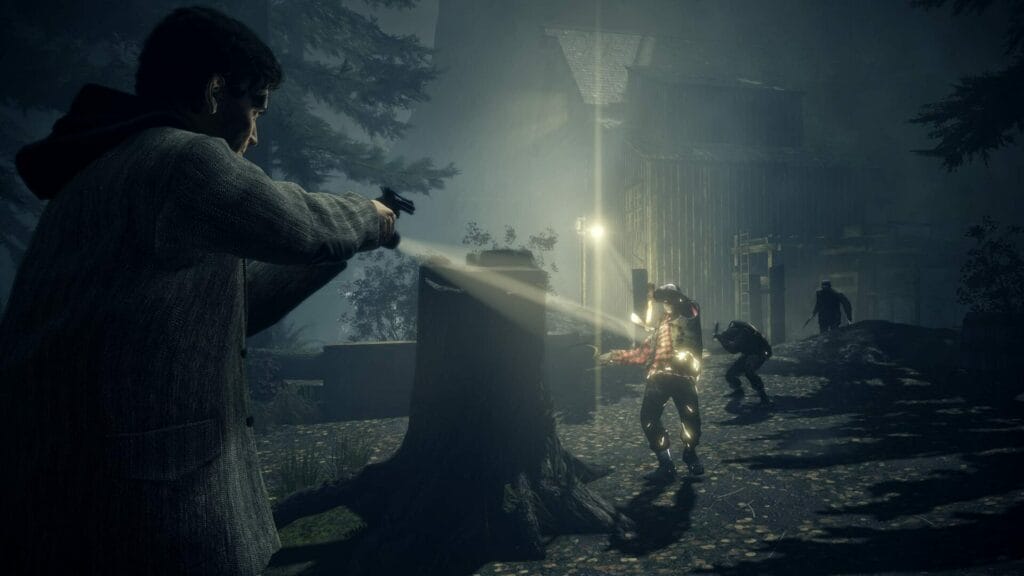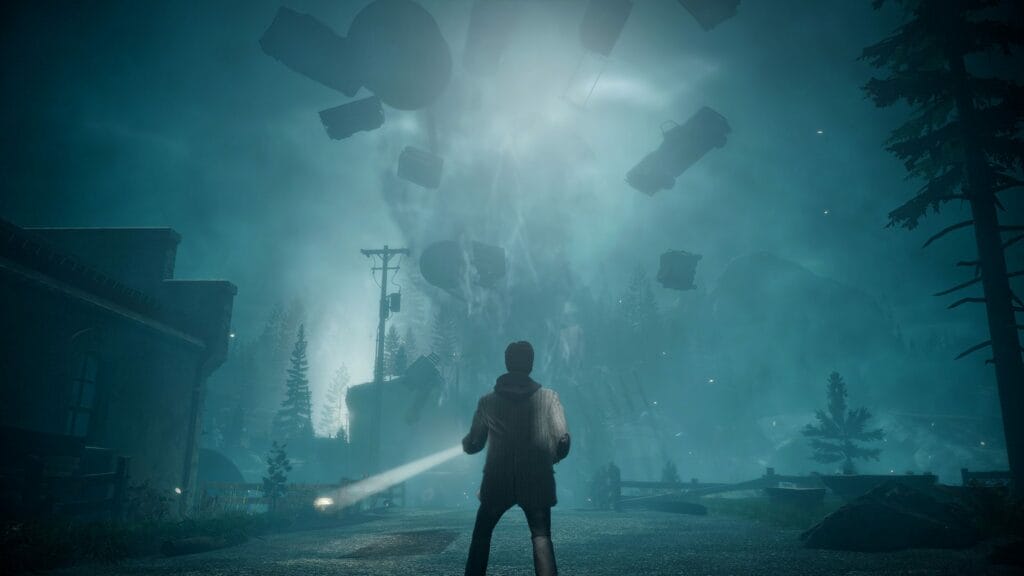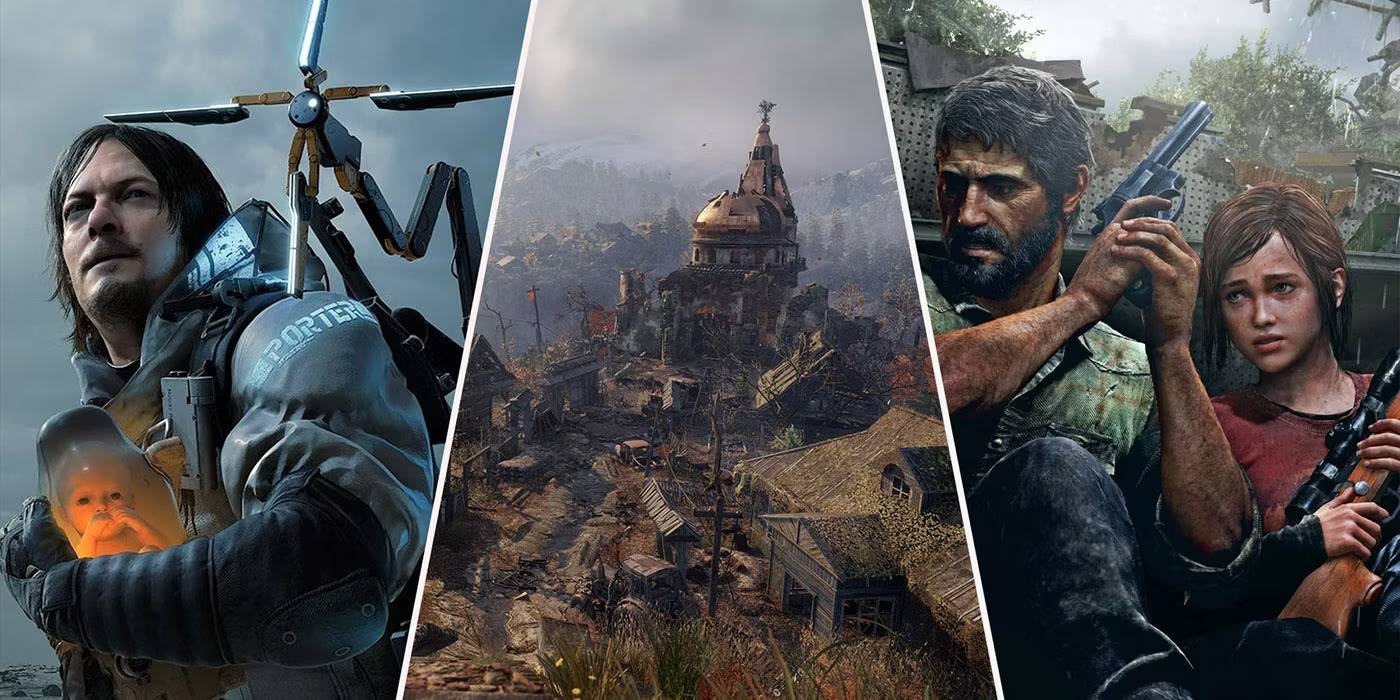Alan Wake is a psychological horror action-adventure game that combines elements of a thriller with supernatural horror. Players control Alan Wake, a bestselling novelist who ventures into the mysterious town of Bright Falls to recover from writer’s block. However, upon arrival, his wife disappears, and Wake finds himself trapped in a nightmare where his own writing seemingly comes to life. The game is known for its episodic structure, atmospheric tension, and deep narrative inspired by classic horror and mystery works.
Plot and Setting
Alan Wake is set in the fictional town of Bright Falls, Washington, a remote, eerie location surrounded by dense forests and towering mountains. The story begins when Alan Wake and his wife, Alice, travel to Bright Falls for a vacation. Shortly after their arrival, Alice disappears, and Wake begins to experience strange supernatural occurrences tied to a novel he doesn’t remember writing. As he searches for his wife, Wake uncovers a dark presence that haunts the town, turning ordinary people into shadowy “Taken” creatures.
The narrative is heavily influenced by psychological horror, with clear homages to Stephen King’s novels, David Lynch’s Twin Peaks, and The Twilight Zone. The story unfolds in an episodic format, mimicking the structure of a television series, with each episode ending on a cliffhanger.

Gameplay Mechanics
- Light vs. Darkness Combat: The central gameplay mechanic in Alan Wake revolves around the use of light to combat shadowy enemies. The “Taken” are vulnerable only when exposed to light, requiring players to first weaken them with flashlights or other light sources before finishing them off with firearms. Streetlights, flashbangs, and flares also play a critical role in protecting Wake from the darkness.
- Exploration and Puzzle-Solving: In addition to combat, players must explore the mysterious town of Bright Falls and its surrounding areas, such as forests, cabins, and lakes. The game encourages exploration, with hidden manuscript pages scattered throughout the world. These pages, written by Wake himself, offer insight into the story and often foreshadow events.
- Narrative Focus: The story is deeply interwoven with the gameplay, and Alan’s own narration helps guide players through his increasingly fragmented reality. Manuscript pages found throughout the game provide cryptic clues to the unfolding story, enhancing the mystery and suspense.
- Episodic Structure: Alan Wake is structured like a TV show, with each episode ending on a dramatic cliff-hanger. This format allows for a tight narrative flow, with each “episode” presenting a mix of combat, exploration, and story development.
Visuals and Audio
Alan Wake features a striking visual aesthetic, with Bright Falls’ idyllic yet haunting environment brought to life through dynamic lighting and atmospheric effects. The contrast between light and darkness is a central theme, and the game’s lighting system is integral to both its gameplay and narrative. Dense fog, shifting shadows, and surreal supernatural events all add to the game’s eerie atmosphere.
The audio design is equally important, with chilling soundscapes and environmental sounds heightening the tension. The voice acting, especially Alan’s narration (voiced by Matthew Porretta), adds emotional depth and an unsettling sense of dread as the story unfolds. The soundtrack includes songs by the in-game band “Old Gods of Asgard” and licensed tracks that help set the mood.
Narrative and Themes
At the heart of Alan Wake is the theme of creativity and the blurred line between reality and fiction. The game explores how the act of writing can create worlds, and how these worlds can sometimes spiral out of control. As Alan becomes increasingly unsure of what is real and what is part of his own story, the player is drawn into a psychological struggle where light is a literal and symbolic source of hope.
Other major themes include isolation, the fear of losing control, and the dangers of obsession. The game’s narrative dives into the concept of a “dark presence” that manipulates reality, with strong elements of supernatural horror as Wake battles not only physical enemies but also his own mind.

Reception and Impact
Alan Wake received critical acclaim for its storytelling, atmosphere, and unique approach to horror gameplay. The game was praised for its cinematic presentation, tight narrative, and its innovative light-based combat system. While the combat was considered somewhat repetitive by some players, the overall experience of the game, including its psychological depth and immersive world, left a lasting impression.
The game’s episodic structure, combined with its cliff-hanger-heavy story and homages to classic horror, set Alan Wake apart from other games in the genre. Its blend of psychological thriller, action, and supernatural elements was widely lauded.
Have you played Alan Wake What’s your favourite Part of it? We’d love to hear from you.
Other things you might want to know:
What was Alan Wake 1 about?
Players control Alan Wake, a bestselling novelist who ventures into the mysterious town of Bright Falls to recover from writer’s block. However, upon arrival, his wife disappears, and Wake finds himself trapped in a nightmare where his own writing seemingly comes to life.
Should you play Alan Wake 1 before 2?
You do not necessarily have to play the first before the second, however the original does have great moments in on itself.
Is the first Alan Wake any good?
Alan Wake received critical acclaim for its storytelling, atmosphere, and unique approach to horror gameplay. The game was praised for its cinematic presentation, tight narrative, and its innovative light-based combat system.
Check out other articles by month:







